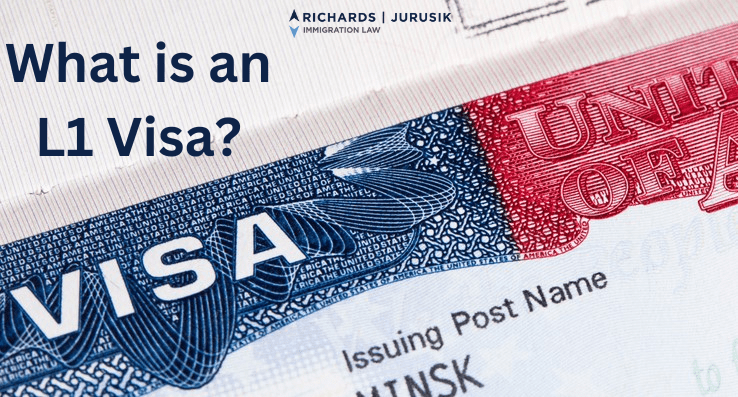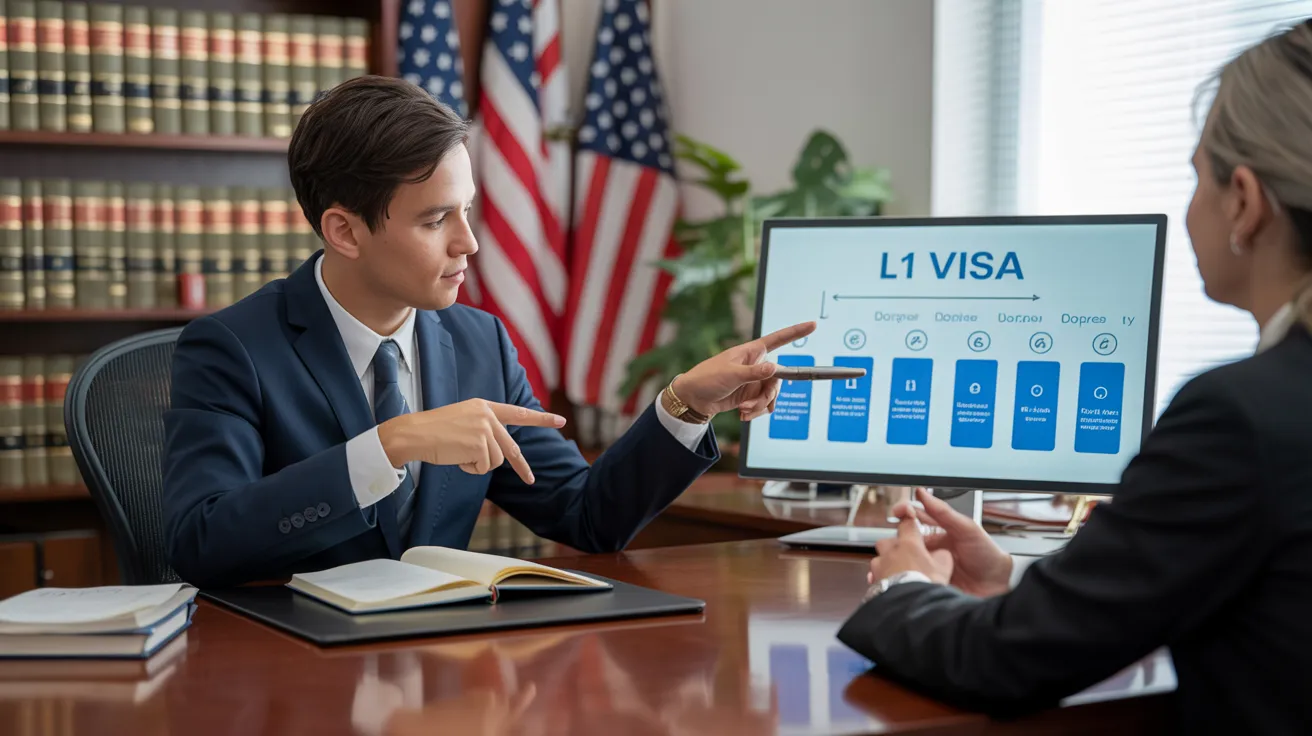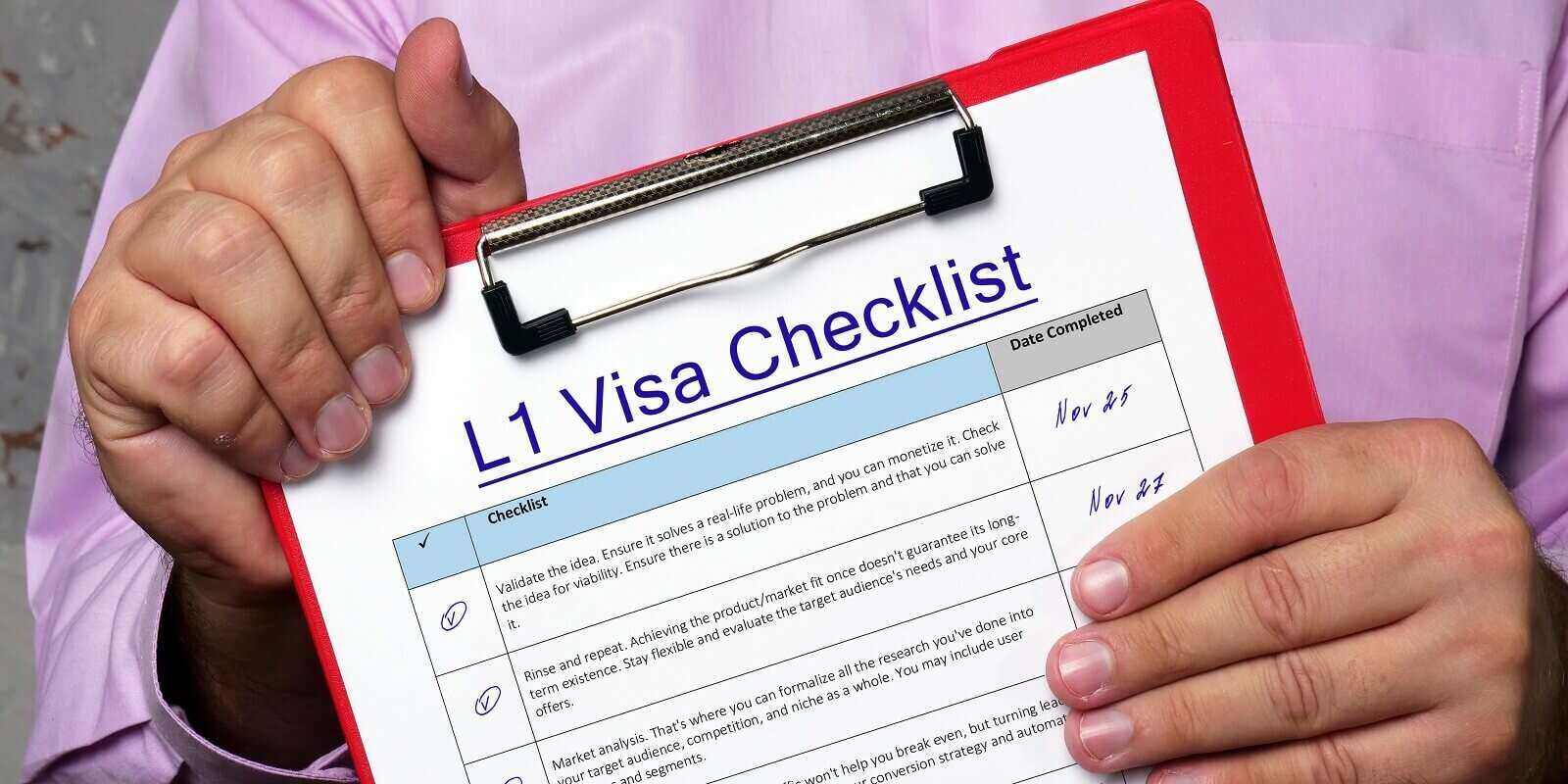Opening Opportunities: A Comprehensive Overview to the L1 Visa Process
The L1 visa process presents an important path for international business seeking to transfer key employees across boundaries. Recognizing the subtleties of qualification criteria, the distinctions in between L-1A and L-1B visas, and the ins and outs of the application procedure can greatly impact an applicant's success. Navigating this complex landscape is not without its challenges, and careful attention to documentation and company sponsorship is important. As we check out the crucial components of this procedure, the methods for getting rid of potential obstacles will certainly come to be noticeable, disclosing exactly how educated prep work can open a globe of opportunities.
Understanding the L1 Visa
Comprehending the L1 visa entails identifying its importance as an essential tool for international companies looking for to transfer knowledgeable workers between worldwide offices. This non-immigrant visa category promotes the movement of execs, supervisors, and specialized expertise workers to the USA, thus enabling organizations to preserve functional continuity and harness global talent successfully. The L1 visa is divided right into two key categories: L-1A for supervisors and executives, and L-1B for workers possessing specialized knowledge.The L1 visa serves a critical function in improving a company's competitive side in the global market - L1 Visa. By enabling companies to transfer their key employees, companies can assure that critical jobs are handled by certified individuals who are already acquainted with the firm's culture and operational processes. This inner transfer mechanism not just fosters knowledge sharing yet also promotes innovation and cooperation across borders.Moreover, the L1 visa is commonly preferred for its fairly uncomplicated application procedure contrasted to various other visa classifications, as it allows for double intent, permitting owners to seek permanent residency while on a momentary job visa. This feature makes the L1 visa particularly appealing for both employers and workers, as it improves the path for skilled experts to establish long-term residency in the United States
Qualification Criteria
Eligibility for the L1 visa depends upon several vital standards that ensure both the staff member and the company fulfill details credentials. This non-immigrant visa is made for international companies to transfer employees from consular services to united state counterparts.Firstly, the employer should be a qualifying company, which includes a parent business, branch, affiliate, or subsidiary of an U.S. service. The firm needs to have been doing company for a minimum of one year both in the united state and abroad. This guarantees that the company has enough operational security and a genuine presence.Secondly, the staff member must hold a managerial, exec, or specialized understanding position. For L1A visas, the candidate must show supervisory or executive credentials, while L1B visas concentrate on specialized expertise associated to the organization's items, services, or procedures. Additionally, the staff member needs to have benefited the international entity for at the very least one constant year within the last three years prior to their application.Lastly, the employee's role in the united state must straighten with their previous position, making certain that their skills and experience are leveraged for the business's benefit.
Types of L1 Visas
The L1 visa category consists of two key kinds created to help with the transfer of staff members within multinational business: the L1A visa for supervisors and execs, and the L1B visa for workers with specialized knowledge. Each type serves distinctive purposes and has particular qualification criteria.The L1A visa is tailored for individuals that hold supervisory or executive positions within a firm. This visa enables high-level staff members to transfer to a united state branch, subsidiary, or affiliate of the very same company. Candidates for the L1A visa have to demonstrate that they have been used in a managerial or executive capability for a minimum of one continuous year within the previous 3 years prior to their application. Furthermore, this visa offers a longer duration of keep, at first granted for three years, with the possibility of extensions for as much as 7 years.In comparison, the L1B visa is planned for professionals with specialized understanding pertaining to the firm's products, services, or procedures. To qualify, applicants have to confirm that their knowledge is critical to the organization which they have helped at the very least one constant year within the last three years in a function that needed this specialized knowledge. The L1B visa is originally granted for 3 years, with expansions readily available for approximately 5 years.Both visa types are necessary for firms looking for to improve their international procedures by leveraging skilled employees, thereby promoting advancement and performance within the united state market.
Application Process
Steering via the L1 copyright process includes several important steps that have to be meticulously complied with to guarantee a successful outcome. The procedure begins with the U.S. employer, who have to first establish eligibility by demonstrating a certifying partnership with the foreign entity and confirming that the employee fulfills the details requirements for the L1 visa group being sought.Once eligibility is verified, the employer initiates the procedure by submitting Kind I-129, the Request for a Nonimmigrant Worker, with the United State Citizenship and Immigration Solutions (USCIS) This type must be come with by an in-depth summary of the job duties to be done, the business framework of both the U.S. and international entities, and the employee's credentials. It's essential to verify that all details is precise and full, as noninclusions or inaccuracies can bring about delays or denials.Upon authorization of the I-129 application, the next step includes the staff member making an application for the L1 visa at an U.S. consular office or consulate in their home country. This stage requires the conclusion of Kind DS-160, the Online Nonimmigrant copyright, and scheduling a meeting. During the interview, the applicant has to present proof sustaining their credentials and the employer's petition.After the visa is provided, the employee can get in the USA to function in the assigned duty. Overall, mindful preparation and adherence per action of the application process are necessary for an effective L1 visa end result.
Required Documentation

Vital Kinds Required
Maneuvering the L1 Visa procedure requires mindful interest to the vital kinds and paperwork essential for a successful application. The key type needed is the Kind I-129, Application for a Nonimmigrant Worker, which have to be completed and sent by the U.S. company. This type lays out the information of the employment offer and the qualifications of the employee looking for the L1 Visa.Alongside Form I-129, the candidate will certainly require to total Kind I-539 if accompanying relative are likewise obtaining visas. Additionally, the company has to supply proof of the qualifying partnership between the united state entity and the international entity, typically necessitating the submission of business papers such as short articles of consolidation or economic statements.Moreover, it is necessary to include the L Category Supplement to Kind I-129, which specifies the type of L Visa being asked for-- either L-1A for supervisors and executives or L-1B for staff members with specialized expertise. Finally, candidates ought to assure that all kinds are signed and dated properly, as insufficient submissions can lead to hold-ups or rejections. Appropriately putting together these essential forms lays the foundation for a smoother L1 copyright process.

Sustaining Proof Needs
Sustaining paperwork is vital for a successful L1 copyright, as it validates the insurance claims made in the application. Applicants must offer a variety of documents to show eligibility for the visa, which is categorized right into two primary kinds: evidence of the qualifying partnership in between the united state and foreign entities and proof of the candidate's qualifications.To develop the partnership, candidates ought to send documents such as company business graphes, economic statements, and evidence of ownership. These files validate that the international company has a certifying partnership with the U.S. company, whether as a parent firm, subsidiary, branch, or affiliate.For the candidate's credentials, essential documents consist of an in-depth employment letter from the international company, describing the candidate's task title, duties, and duration of work. In addition, academic credentials, such as degrees and diplomas, need to be offered to show the candidate's experience in the relevant area.
Employer Sponsorship Documents

Common Obstacles
Maneuvering the L1 visa procedure presents several common challenges that candidates ought to know. Key concerns usually consist of strict documentation needs, potential delays in handling times, and the necessity for rigorous lawful compliance. Understanding these challenges can aid candidates much better prepare and minimize dangers throughout their copyright trip.
Documentation Demands
The L1 copyright procedure typically offers considerable obstacles connected to documents needs. Applicants have to offer considerable documentation to establish eligibility, which can cause complication and possible hold-ups. Key papers consist of evidence of a certifying relationship between the united state and foreign employer, evidence of the applicant's work background, and comprehensive info regarding the work role in the U.S.One typical obstacle is collecting enough evidence to show the nature of the qualifying relationship. Companies typically struggle to present clear organizational charts or monetary statements that show the connection between the entities. Additionally, ensuring that letters of support from employers precisely reflect the applicant's task obligations and qualifications is necessary, as obscure descriptions can cause denials.Another problem develops from the need for comprehensive task descriptions that align with the L1 visa categories. Applicants should verbalize not only their current role yet also their managerial or specialized expertise duties clearly. This necessitates an extensive understanding of both the applicant's placement and the regulative language made use of in L1 applications.
Handling Dead Time
Experiencing hold-ups in handling times is a common obstacle faced by L1 visa applicants, usually resulting in disappointment and unpredictability. Numerous aspects add to these hold-ups, including high application volumes, increased scrutiny of applications, and management backlogs within the U.S. Citizenship and Migration Provider (USCIS) Candidates may find that processing times can differ significantly depending upon the solution facility managing their application, as each center has its own workload and efficiency degrees. Furthermore, the intricacy of the candidate's instance, such as the requirement for extensive documents or clarification, can further expand wait times.In some instances, problems associated with the candidate's present migration status or previous visa history may additionally cause additional hold-ups, as USCIS may need more evaluation or information. It is essential for prospects to continue to be proactive throughout this period, keeping open communication with their employers and lawful representatives to resolve any kind of potential worries promptly.Understanding these handling time challenges can help L1 visa candidates get ready for possible hold-ups and minimize the impact on their change and occupation strategies. Perseverance and diligence are crucial virtues in steering this intricate process.
Legal Compliance Issues
Lots of L1 visa candidates run into lawful conformity concerns that can complicate their trip toward getting the visa. Understanding and adhering to the certain laws set by the U.S. Citizenship and Immigration Services (USCIS) is vital. Typical challenges consist of showing the certifying partnership between the foreign and U.S. employers, as well as showing that the candidate has the requisite customized understanding or managerial capacity.Additionally, candidates have to provide extensive documentation detailing their task tasks, company framework, and economic stability of the united state entity. Poor or imprecise documents can bring about hold-ups or also rejections. Employers need to likewise ensure that they comply with labor laws, consisting of wage and working problem standards, which can impact visa eligibility.Another typical problem involves maintaining conformity with the regards to the visa as soon as given. Changes in employment standing, task responsibilities, or firm framework can require amendments to the visa, which otherwise addressed quickly can bring about legal complications. Consequently, staying notified about compliance requirements and seeking lawful guidance when necessary is important to browse the intricacies of the L1 visa procedure successfully.
Tips for Success
Success in the L1 copyright procedure commonly hinges on thorough preparation and focus to information. To boost your opportunities of approval, begin by completely recognizing the eligibility needs for both the L1A and L1B visa classifications. Assess whether your position at the firm qualifies as supervisory, exec, or specialized understanding, as this categorization especially influences your application.Next, gather extensive documents that validates your cases. This consists of business charts, detailed work descriptions, and evidence of the business's operational structure. Clear and succinct evidence of the certifying connection in between the united state entity and the foreign entity is vital. Validate that all records are arranged rationally and offered in a specialist way, as this shows your commitment and seriousness regarding the application.Engage the solutions of a knowledgeable immigration lawyer that specializes in L1 visas. Their knowledge can verify very useful, leading you via complicated laws and ensuring that all documentation adheres to current legislations. In addition, get ready for the meeting by exercising responses to usual inquiries and preparing to discuss your duty and contributions to the firm detailed.
Regularly Asked Inquiries
Can Family Members Members Come With the L1 Visa Owner?
Yes, member of the family of L1 visa holders, including spouses and single youngsters under 21, can come with the main visa holder. They might likewise look for L2 visas, which allow them to reside in the United States.
The Length Of Time Can I Remain on an L1 Visa?
The L1 visa enables initial stays of approximately three years, with the possibility of expansion. L1A visa owners may stay for a maximum of seven years, while L1B visa owners can continue to be for 5 years.
Can L1 Visa Owners Make An Application For an Environment-friendly Card?
Yes, L1 visa holders can apply for a permit. L1 Visa. They might pursue permanent residency via employment-based categories, usually needing sponsorship from their employer, given they meet the necessary qualifications and documents requirements
What Occurs if My L1 copyright Is Denied?
If your L1 copyright is denied, you may obtain a notice describing the reasons for denial. You can seek to appeal the choice, reapply, or explore different visa choices based upon your scenarios.
Are There Any Traveling Limitations With an L1 Visa?
An L1 visa normally permits global traveling; nevertheless, re-entry to the united state is contingent upon maintaining valid condition. Vacationers ought to assure conformity with visa conditions to prevent difficulties upon return
Final thought
